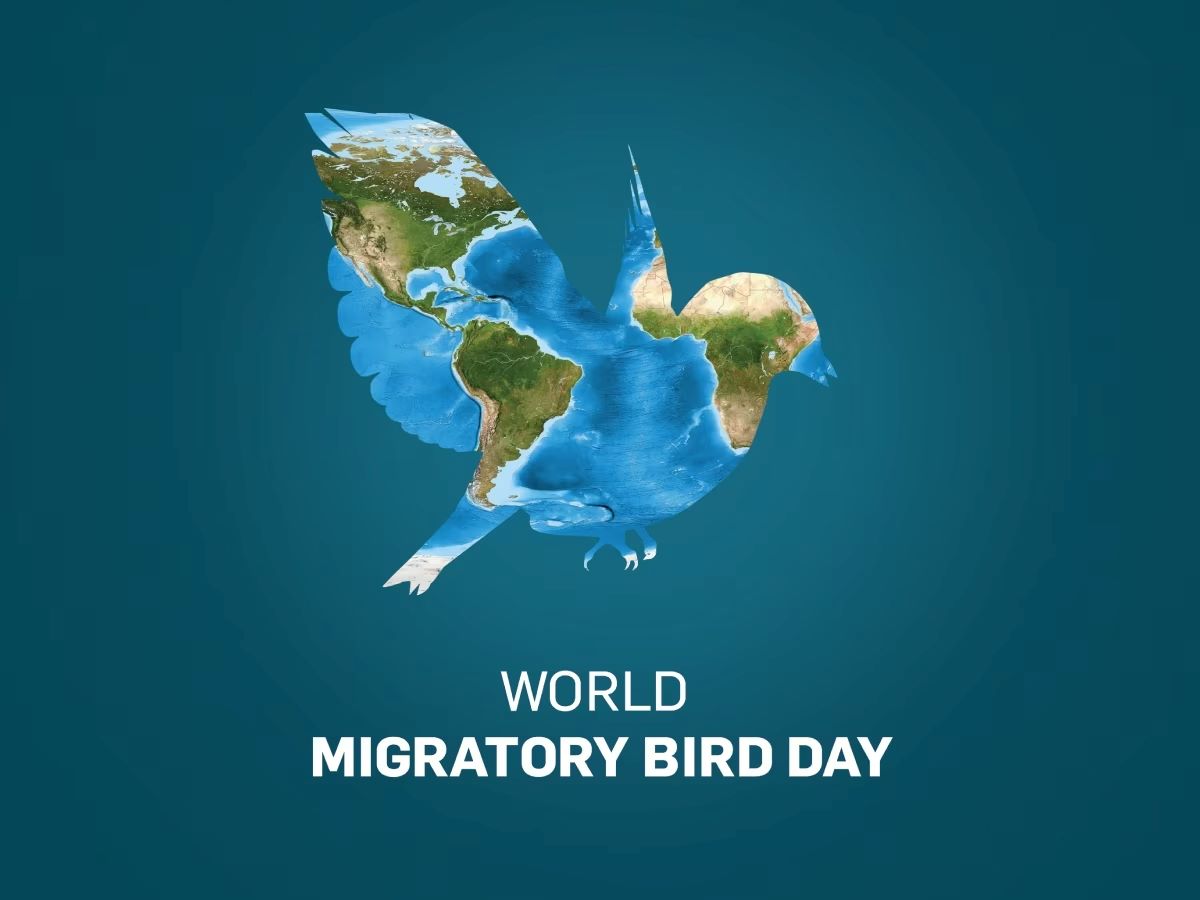
Ever wondered why birds head south for the winter? Or perhaps, what makes them return each spring? World Migratory Bird Day on May 11th celebrates these incredible journeys, shedding light on the challenges migratory birds face and the need for their conservation. This day isn't just for the birds; it's a global reminder of our shared skies and the intricate connections within our ecosystems. From the tiniest hummingbird to the majestic albatross, each bird's migration story is a marvel of nature. Ready to be amazed by feathered travelers? Let's soar into the fascinating world of migratory birds and uncover 15 facts that highlight the significance of this day.
Key Takeaways:
- World Migratory Bird Day celebrates the amazing journey of birds and the need to protect them. It's a day to learn, participate, and spread awareness about bird conservation.
- Migratory birds face challenges like habitat loss, climate change, and pollution. We can help by participating in events, turning off unnecessary lights, and supporting conservation efforts.
What is World Migratory Bird Day?
World Migratory Bird Day celebrates the incredible journey that migratory birds take across continents each year. It aims to raise awareness about the need for the conservation of birds and their habitats. This day is observed on the second Saturday in May and again in October to cover the different migration periods.
Why Celebrate Migratory Birds?
Migratory birds are marvels of nature, traveling thousands of miles between breeding and wintering grounds. They play a crucial role in ecosystems, acting as pollinators, seed dispersers, and controlling pest populations. Celebrating these birds helps highlight the challenges they face, such as habitat loss, climate change, and pollution.
-
World Migratory Bird Day was initiated in 2006 as a global effort to protect migratory birds and their habitats.
-
The day is a collaborative effort between two UN treaties: the Convention on Migratory Species (CMS) and the African-Eurasian Migratory Waterbird Agreement (AEWA).
Themes and Significance
Each year, World Migratory Bird Day is celebrated with a unique theme, focusing on specific challenges or aspects of bird migration. These themes serve as a focal point for educational and conservation activities around the world.
-
The theme for 2021 was "Sing, Fly, Soar – Like a Bird!" highlighting the joy birds bring to people's lives and the importance of their conservation.
-
For 2023, the theme is "Dim the Lights for Birds at Night," focusing on the issue of light pollution and its impact on migratory birds.
How Can You Participate?
Participation in World Migratory Bird Day can take many forms, from attending events to engaging in citizen science projects or simply spreading the word about the importance of bird conservation.
-
Individuals can participate by turning off unnecessary outdoor lights during migration seasons to help reduce light pollution.
-
Schools and communities often organize bird-watching events, educational workshops, and art contests to celebrate the day.
-
Social media campaigns are also a powerful tool for raising awareness, with hashtags like #WorldMigratoryBirdDay gaining traction across platforms.
The Impact of Climate Change on Migratory Birds
Climate change poses a significant threat to migratory birds, affecting their breeding, feeding, and migration patterns. Rising temperatures and changing weather patterns can disrupt the delicate balance of ecosystems that birds rely on.
-
Studies have shown that climate change is causing shifts in migration timings, with birds arriving at breeding grounds either too early or too late.
-
Habitat loss due to climate change, such as the melting of Arctic ice and rising sea levels, further endangers migratory bird populations.
Conservation Efforts and Success Stories
Conservation efforts around the world have led to some success stories, showcasing the positive impact of concerted global and local actions.
-
The Black-faced Spoonbill, once facing extinction, has seen its population increase due to dedicated conservation efforts across its migratory route.
-
International cooperation, such as the East Asian-Australasian Flyway Partnership, has been crucial in protecting migratory bird habitats across national borders.
Challenges Facing Migratory Birds
Despite conservation successes, migratory birds still face numerous challenges. Habitat destruction, pollution, and illegal hunting are just a few of the threats these birds encounter.
-
Window collisions are a significant cause of death for migratory birds in urban areas, with millions perishing each year.
-
The use of pesticides in agriculture not only kills insects that birds feed on but also poisons the birds directly.
-
Climate change and human activities have led to the loss of wetlands, crucial stopover sites for many migratory birds.
-
Illegal hunting and trapping of migratory birds for food, sport, or the pet trade continue to be a significant threat in many parts of the world.
World Migratory Bird Day serves as a reminder of the beauty and ecological importance of migratory birds and the ongoing need for global cooperation in their conservation.
A Final Glance at Migratory Birds
World Migratory Bird Day shines a spotlight on our feathered friends who traverse thousands of miles, showcasing nature's incredible resilience and beauty. Celebrated on May 11th, this day isn't just a marker on the calendar; it's a call to action for conservation, awareness, and appreciation of migratory birds and their habitats. Understanding the challenges these birds face, from climate change to habitat loss, is crucial. Each of us plays a role in ensuring their journeys continue for generations to come. Whether through supporting conservation efforts, creating bird-friendly environments, or simply spreading the word, every action counts. Let's not forget, these birds connect ecosystems across continents, reminding us of our interconnectedness with nature. So, next time you spot a migratory bird, remember, it's not just a visitor passing through; it's a symbol of endurance, diversity, and the global effort needed to preserve our natural world.
Frequently Asked Questions
Was this page helpful?
Our commitment to delivering trustworthy and engaging content is at the heart of what we do. Each fact on our site is contributed by real users like you, bringing a wealth of diverse insights and information. To ensure the highest standards of accuracy and reliability, our dedicated editors meticulously review each submission. This process guarantees that the facts we share are not only fascinating but also credible. Trust in our commitment to quality and authenticity as you explore and learn with us.


